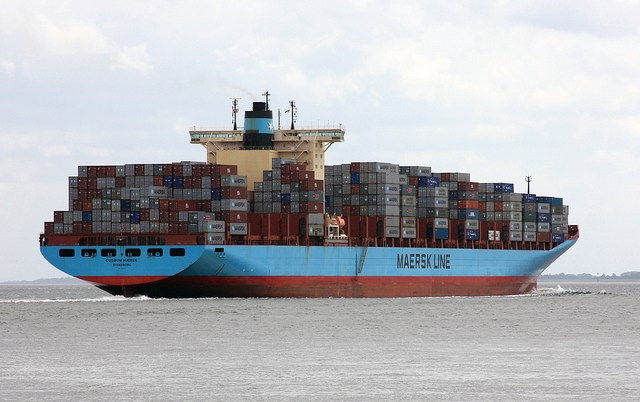The forecast that was made by the Australian Lieutenant Choi of 3D printing being used in the defense system by 2020 has turned into reality in 2014. After the installation of 3D printers on board of the US navy ship USS Essex. This was quite an expected thing that happened in the US Navy as US had shown keen interest in incorporating 3DP into the defense sector.
The popularity of this technology is evident by the way it is being accepted by all the sectors. The newest sector that has welcomed 3D printing with open arms is the shipping industry. Maersk which is a container shipping company based in Copenhagen Denmark is using 3D printers to fabricate spare parts on board. The company which is considered to be one of the largest container shipping companies has a fleet of over 500 container ships which transports goods to consumers all over the world for the past 110 years! Thus 3D printing seems to be the perfect solution for container shipping companies. The company recently announced to have used uPrint SE 3D printers on board to manufacture spare parts for the ships. The printing is done in ABD thermoplastics however the company is looking forward towards the utilization of powder based metal laser sintering machines.
The ability to print spare parts while cruising, towards the destination will not only reduce a lot of cost that is involved in repair but also save a lot of time. The category manager of Maersk Märtha Josefine Rehnberg says, “The idea is that we send the blueprint to the crew on board the tanker vessel, they will push ‘print’ and in a matter of hours get the part.” The basic idea is that engineers who will be sitting at the head office in Copenhagen after getting a call from the ship and as per the demand will develop the blueprint of the part those is required in the .STL format and send it to a computer on board and in a few hours a replacement will be generated from the onboard 3D printer which then will be installed in the vessel.
Since the ship has a printer that uses only ABS thermoplastic material, this definitely limits the types of parts that can be fabricated by a 3D printer but in the near future the prices of laser sintering technology will drop and the technology will be readily available for such applications. As prices drop and the technology advances with leaps and bounds the utility of these machines will be something that will be difficult to avoid and resist.
Since ships have to travel long distances and sailors have to stay in the sea for long period of time with minimal contact with land. The next big thing that 3D printing would be doing for these sailors would be 3D printing food or healing the sailors with the help of the Bio-Printers. the future of this technology is yet to unfold!
Image Credit: Cuxclipper (flickrhandle: cuxclipper1)
